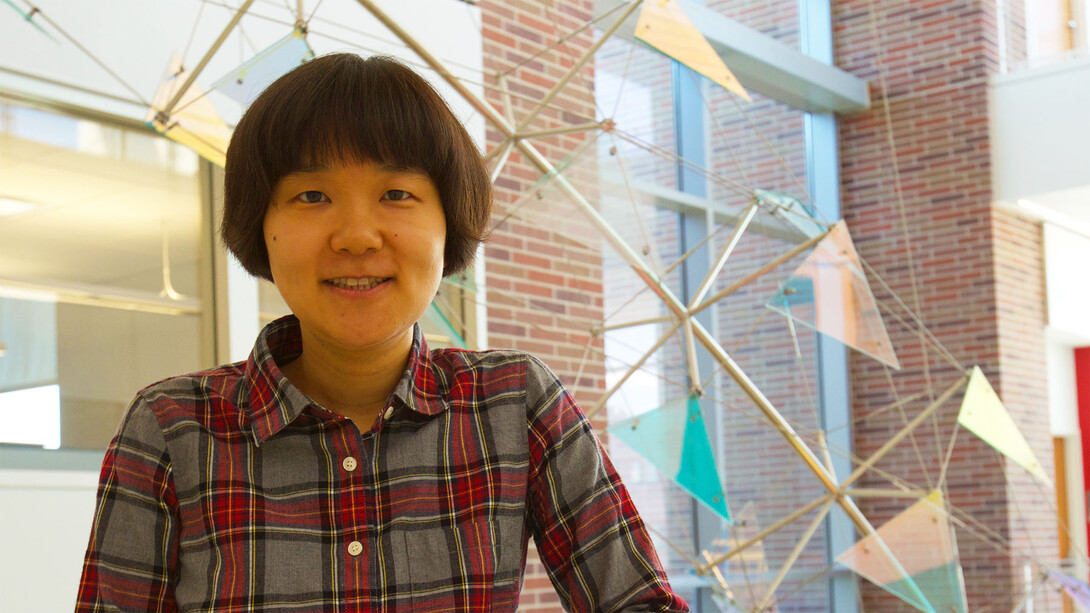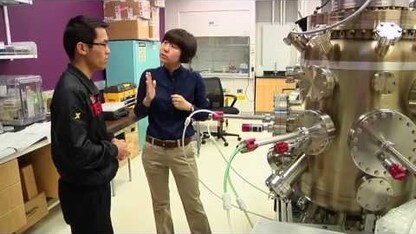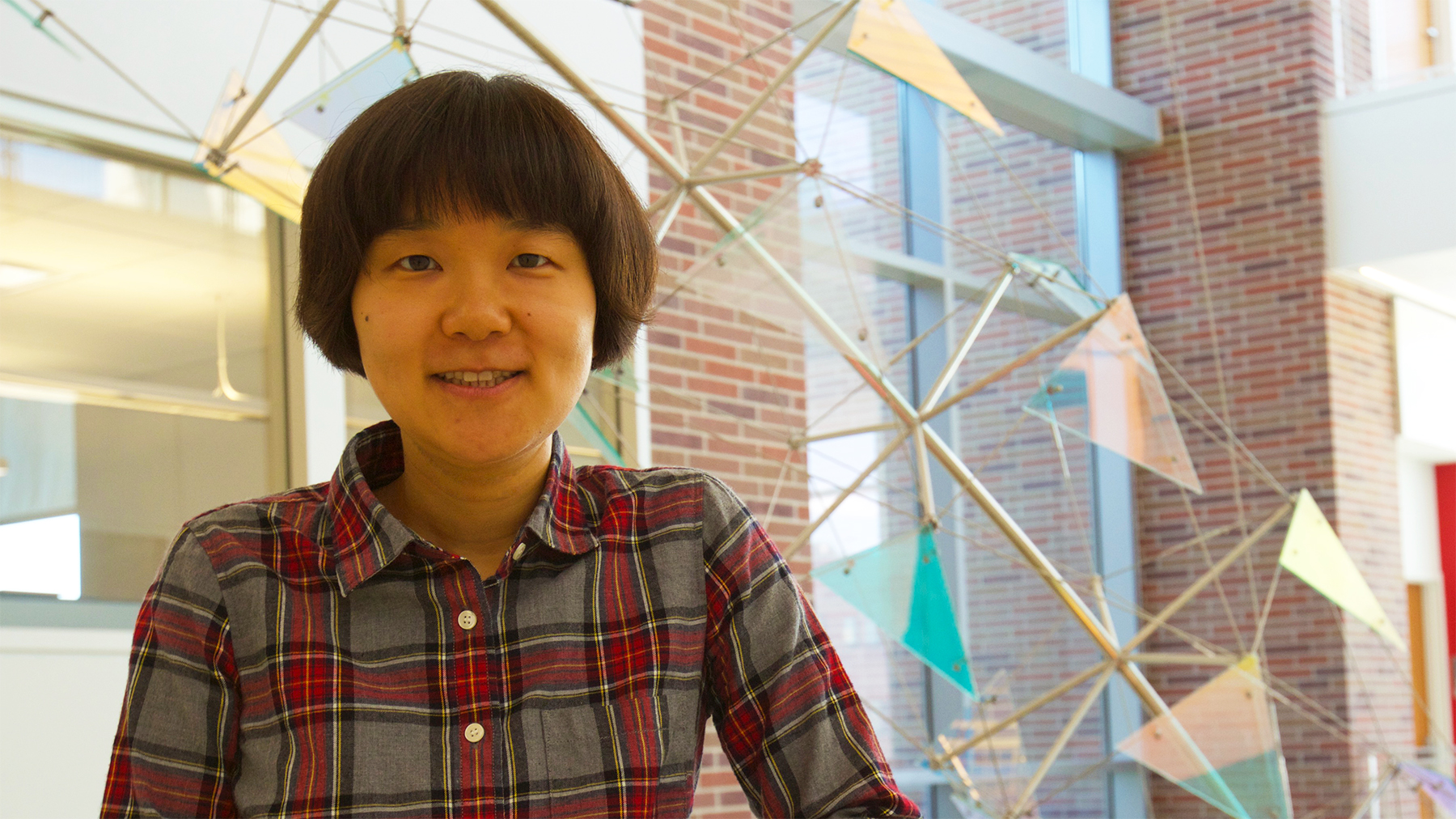
University of Nebraska-Lincoln physicist Xia Hong’s research just earned a power-up from the U.S. Department of Energy.
The DOE’s Office of Science has named Hong, assistant professor of physics and astronomy, one of 49 recipients of its Early Career Award. The award supports promising research from untenured professors who have earned doctorates within the past 10 years.
Totaling $750,262 over the next five years, the award will allow Hong to upgrade essential scanning probe microscopy equipment and add junior researchers to her lab.
Those investments will help Hong pursue nanoscale control of extremely thin films that feature ferroelectricity, meaning that their polarization – the alignment of their positive and negative charges – can be reversed when exposed to an electric field. She intends to pair those films with two-dimensional materials that include graphene – honeycombed sheets of carbon atoms – and atomically thin slices of compounds known as transition metal dichalcogenides.
Hong believes the combinations could produce reconfigurable electronic states that help her team observe new quantum phenomena and expand the versatility of technologies ranging from solar cells to transistors.
“When it comes to electronics, one of the key challenges is scaling them down,” Hong said. “We’re kind of facing a bottleneck where we cannot do that (much further), so we need to find alternative solutions. One of them is not necessarily scaling down the size but (instead) giving it more than one function.
“Effectively, we’re looking to increase the data storage or functionality or density of the electronics without necessarily reducing the size. That is one of the reasons we started to work with these intrinsic 2-D materials. They are already very small, and their atomic structure is very easily disturbed if you find the right tool.”
Hong and her colleagues will aim to manipulate the electronic properties of those 2-D materials by locally reversing the polarization of the neighboring ferroelectric films. She is especially interested in controlling polarization and other phenomena on the nanoscale, where the principles of quantum mechanics open up possibilities not available at larger scales. Confining electrons into nanoscopic regions, for instance, can change a corresponding material’s band gap – the energy that electrons need to jump from their native state to the so-called conduction band that ultimately yields electricity.
By using ferroelectric control to craft nanostructural designs in the 2-D materials, Hong said she hopes to create programmable nanoscale patterns that induce various electronic states. Among other possibilities, this ferroelectric control might be used to change electron trajectories – mimicking the way that optical lenses focus light – or convert a nanowire from a conductor to a semiconductor and back again.
This approach could also help produce more reliable changes in electronic and magnetic behavior, helping them stand pat against the disorder and thermal fluctuations that commonly plague more conventional techniques, Hong said. Those traditional techniques often rely on chemical or mechanical processes that achieve quantum confinement by permanently altering the structure and behavior of a material, limiting its functional flexibility and often degrading its quality.
“The nice thing about what we’re doing is that we start with a single material platform, but we’re using a reconfigurable approach,” she said. “It’s clean and fully reversible. I can write a nanowire in one orientation, erase it, and write it in another orientation or change its width. Basically, I can test different nanostructure designs on the same material platform, rather than using different materials.”
Hong said her approach also has the potential to help overcome the uncertainty inherent in manufacturing and testing technology on the nanoscale.
“When you’re dealing with nanoscale devices, they all seem to be different,” she said. “You produce one that’s wonderful, but it’s hard to produce another one with exactly the same conditions.
“So people always (ask the) question, ‘Is your starting material the same?’ The subtle difference you observed may not be intrinsic to the design of the nanostructure but is (instead) due to some extrinsic effect. But we’re working with the same material platform, so our argument is: If you observe some effect, then it must be associated with the nanostructure you created, not some fluctuation in the materials’ quality.”
Hong’s Early Career Award represents the third in recent years for the Department of Physics and Astronomy. Fellow UNL physicists Alexey Kovalev and Martin Centurion earned the award in 2015 and 2010, respectively.
“We invest in promising young researchers early in their careers to support lifelong discovery science to fuel the nation’s innovation system,” said Cherry Murray, who directs the DOE’s Office of Science. “We are proud of the accomplishments these young scientists already have made and look forward to following their achievements in years to come.”









